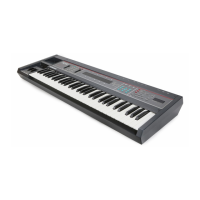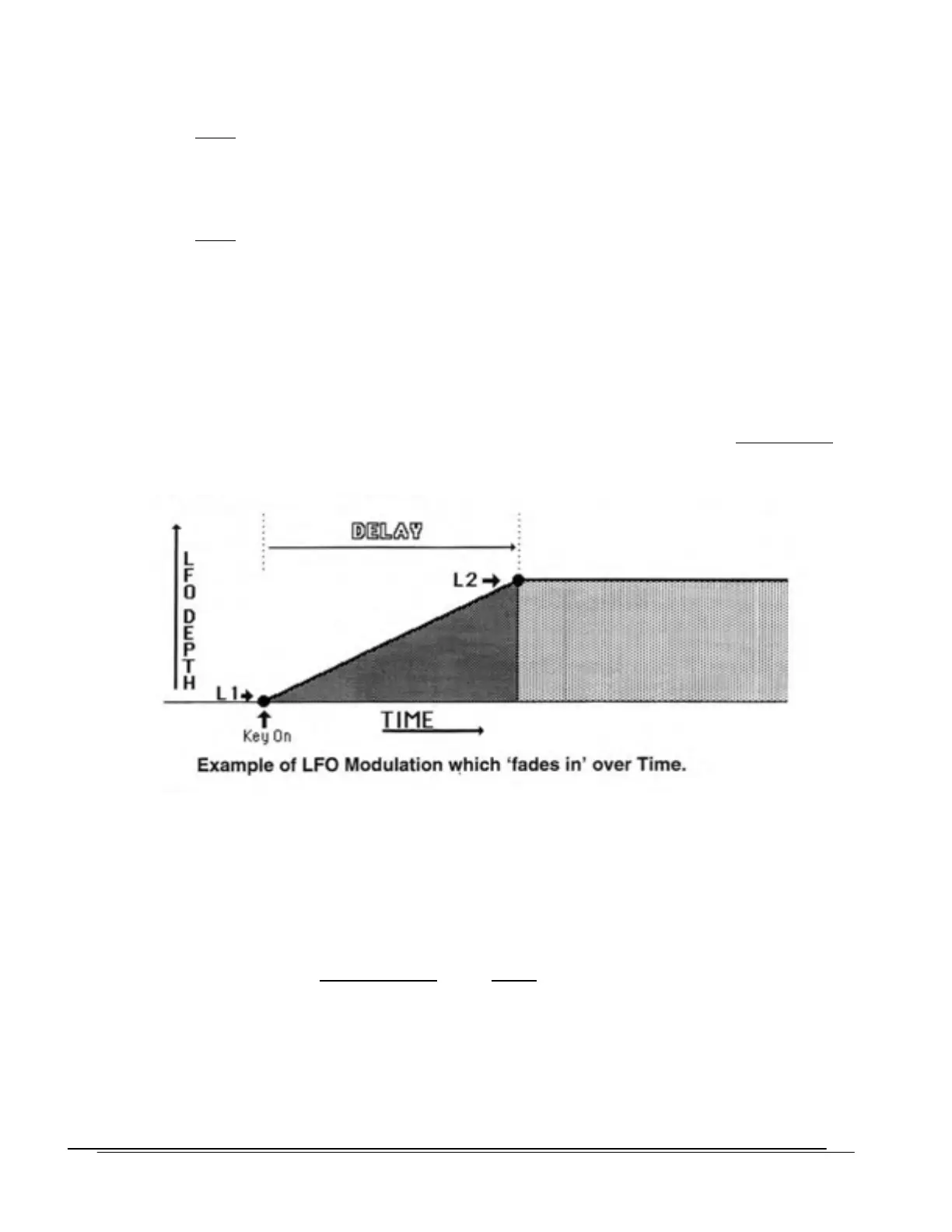SQ-80 — Musician's Manual
struck. This is good for synchronizing
LFO sweeps with key hits.
When OFF:
The LFO wave will cycle continuously, without Resetting.
4. HUMAN
When ON: This control will add a random element to the LFO Frequency, making the effect
less "mechanical" sounding.
When OFF:
The LFO Frequency will behave normally, with perfect repetition.
5. WAV
Selects the Waveform which the LFO will play. The choices are:
TRI — Triangle wave
SAW — Rising Sawtooth wave (Use negative modulation for a falling Sawtooth.)
SQR — Square wave (positive-going only)
NOISE — Random
NOTE: Controls # 6, 7, and 8 combine to form a linear Ramp which defines the LFO Dela
y
. The
Ramp goes from LEVEL 1, which is the starting Level, to
LEVEL 2, which is the sustain Level, and
it can be an increasing or a decreasing Ramp.
6. L1
This is LEVEL 1, the Level at which the LFO will play when the key is first struck.
Range: 0 To 63.
7. DELAY
Determines the Rate at which the LFO's amplitude will go from LEVEL 1 to LEVEL 2. Range:
0 To 63.
Note that here it is the Rate of Change
(or the Slope of the Ramp) which is set, not a fixed Time.
Therefore,
lower values of this parameter will cause a longer Delay; higher values will result in
a
shorter Delay. The amount of Time it takes for the LFO to reach LEVEL 2 thus depends on
both the Rate and the Level.
A value of Zero will cause the LFO to remain at LEVEL 1,
Section 3 — Voice Programming 57

